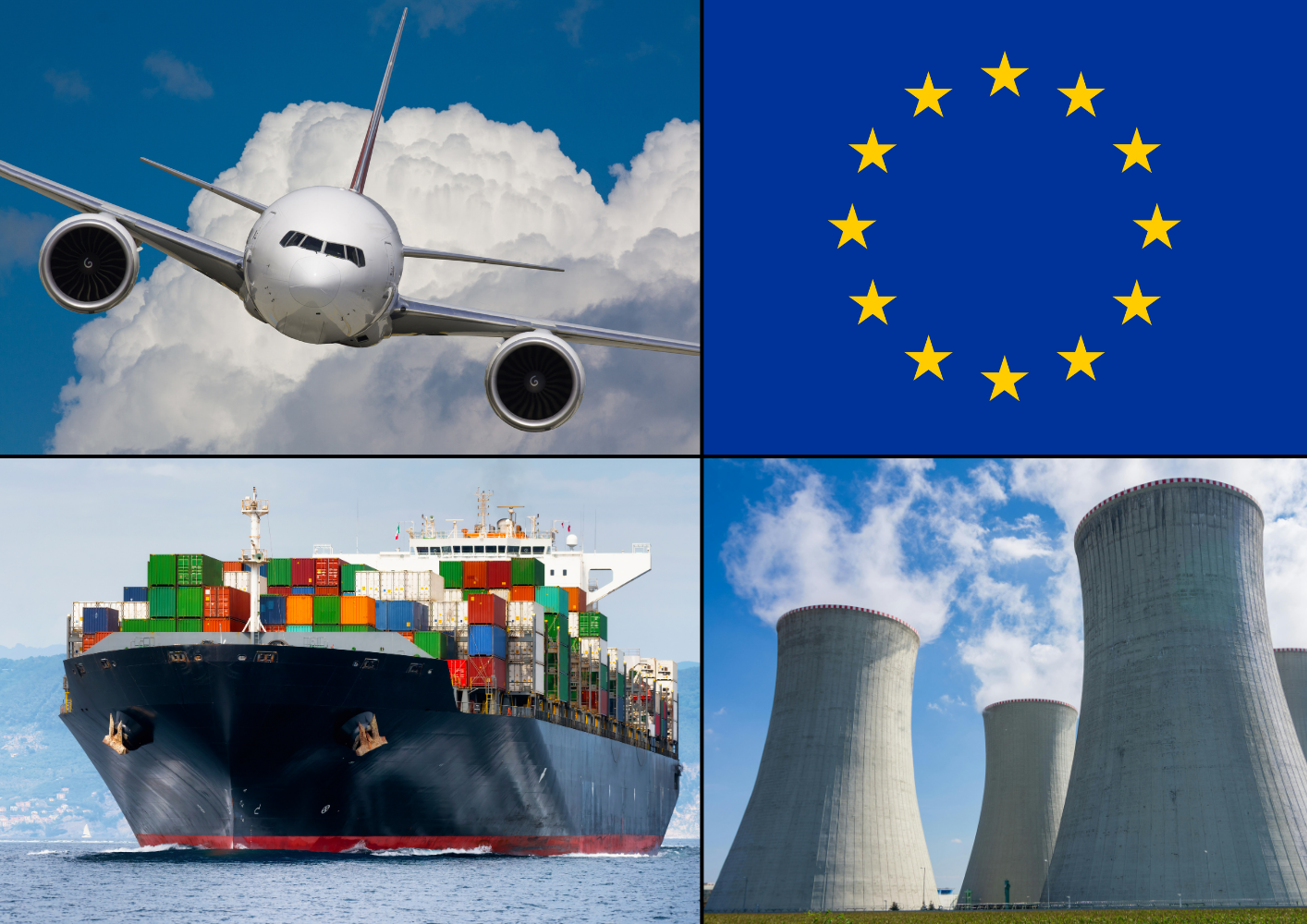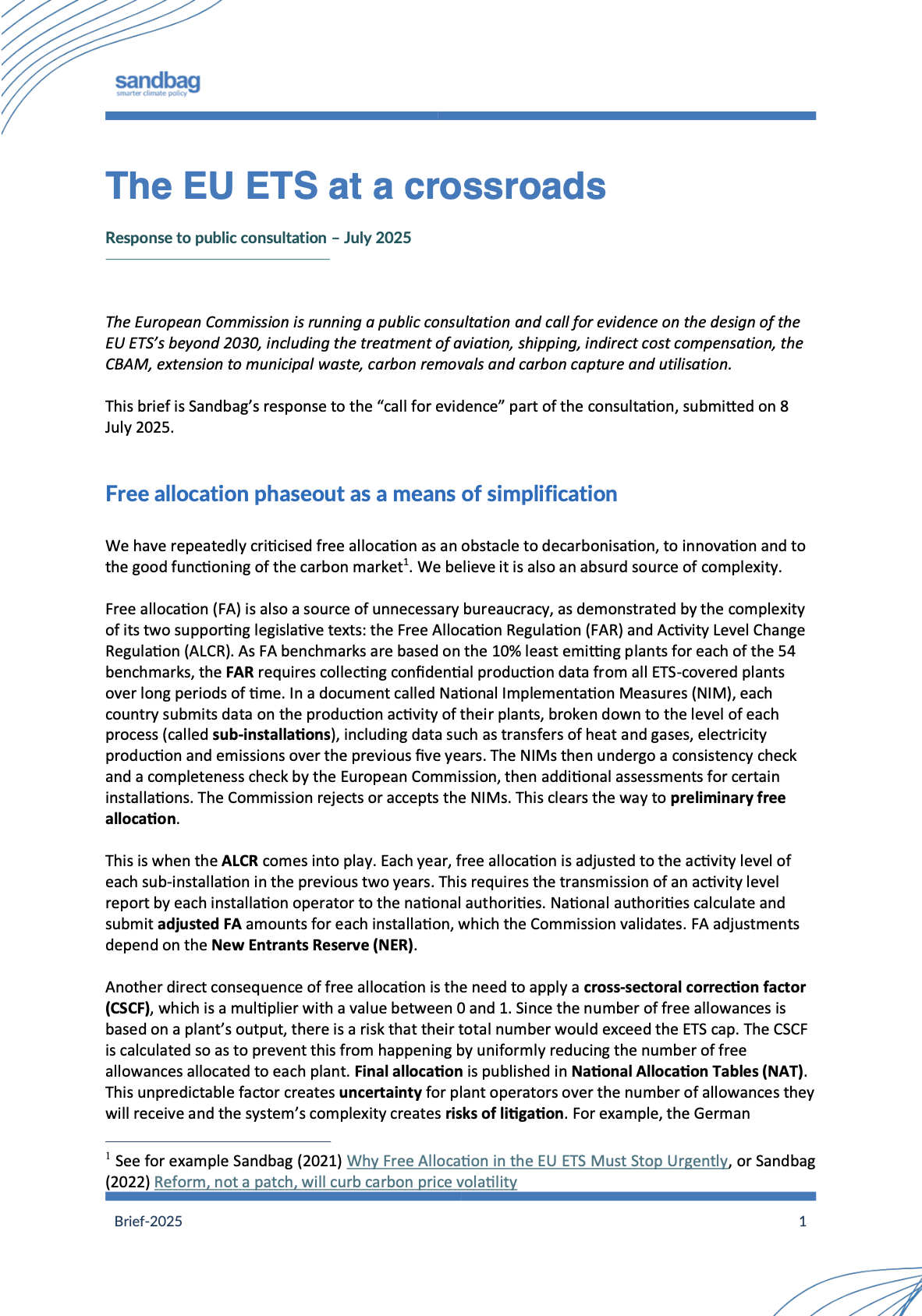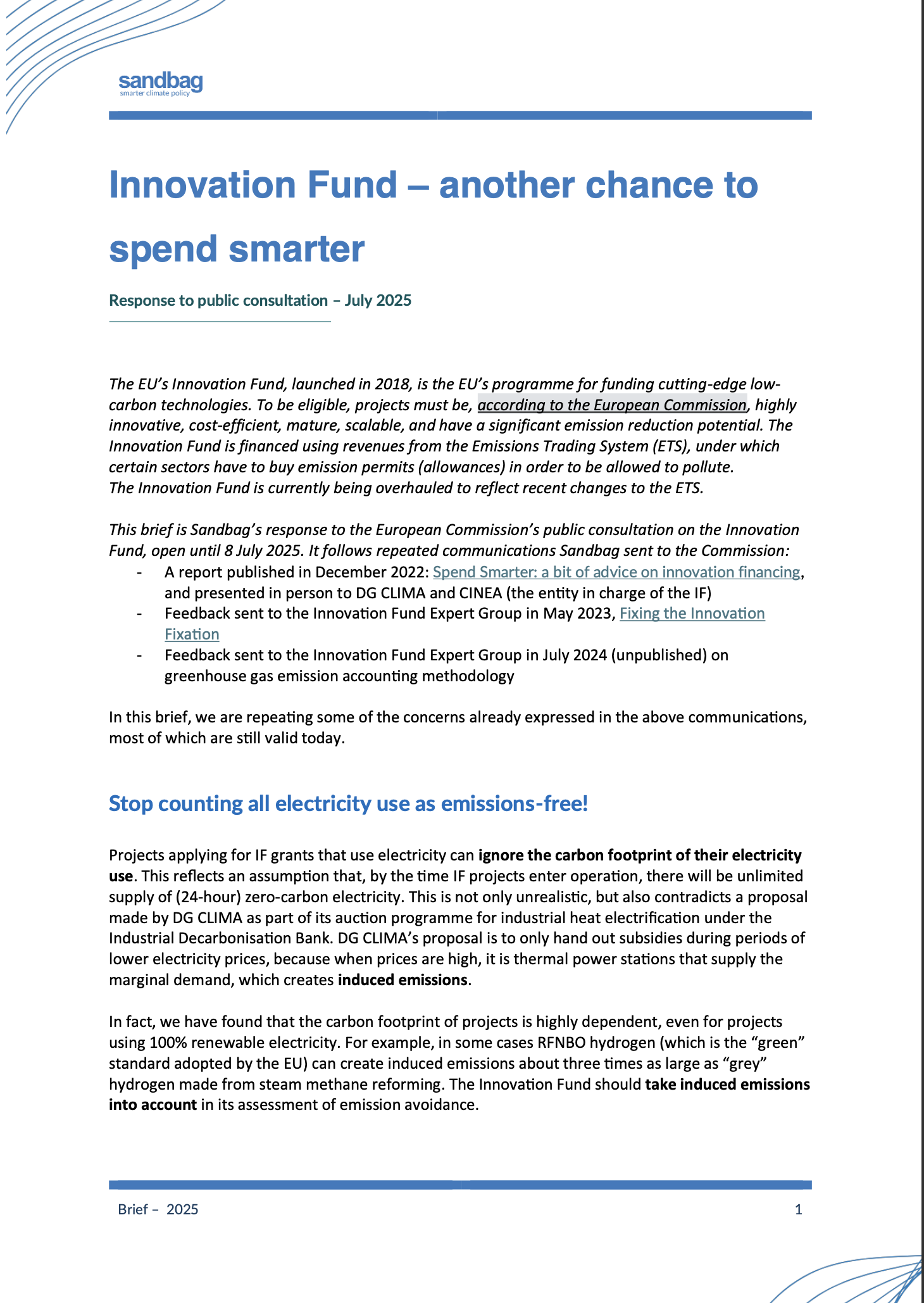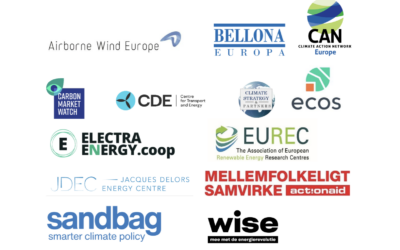Innovation Fund – another chance to spend smarter

The European Commission has been running a public consultation and call for evidence on the design of the EU ETS and the Innovation Fund. Both are open until 8 July 2025. Questions include the treatment of aviation, shipping, indirect cost compensation, the CBAM, extension to municipal waste, carbon removals and carbon utilisation.
Our main messages:
-
Simplify the EU ETS by phasing out free allocation
-
Aviation: put a seat belt on EUA supply
-
Free allocation: switch from process to products
-
Link indirect cost compensation to carbon-free electricity only
-
Reform the Innovation Fund to:
– Better assess the carbon footprint of electricity use
– Reserve grants to technology risk
– Reserve scale-up subsidies to poorly capitalised sectors -
Market Stability Reserve: reduce the reinjection rate as well as thresholds
-
Keep carbon removals out of the ETS
-
Do not shift CCU carbon accounting down value chains
-
Limit linking with other ETS
Read our responses on the European Commission’s website:
Photo credit: Power station, Rob from Pexels.
Container, Federico Rostagno from Getty.
Flag of EU from Alessandro0770 from Getty.
Plane from rebius from Getty.
Read More:
ICC reform and expansion risks diverting ETS revenues from real climate action
Sandbag and 14 other organisations urge the European Commission to reform, not expand, the ETS Indirect Cost Compensation scheme — warning that current proposals risk diverting climate funding into untargeted fossil subsidies.
Simulating CDR in the EU ETS: The Risks of Premature Integration
The EU’s 2040 climate targets suggest integrating carbon removals into the ETS — but at what cost? This report uses Sandbag’s simulator to assess whether the risks of premature CDR integration outweigh the benefits.
In or Out: What’s best for carbon removals and the EU ETS?
What will the future of the EU Emissions Trading System (ETS) look like as the emissions cap heads towards zero? Is integrating carbon dioxide removals (CDRs) into the ETS a solution to help the EU achieve its climate goals? Or would they compromise the integrity and functioning of the system? These questions are at the forefront of the Commission’s mind as they review different options for the future of the ETS ahead of the 2026 revision.





